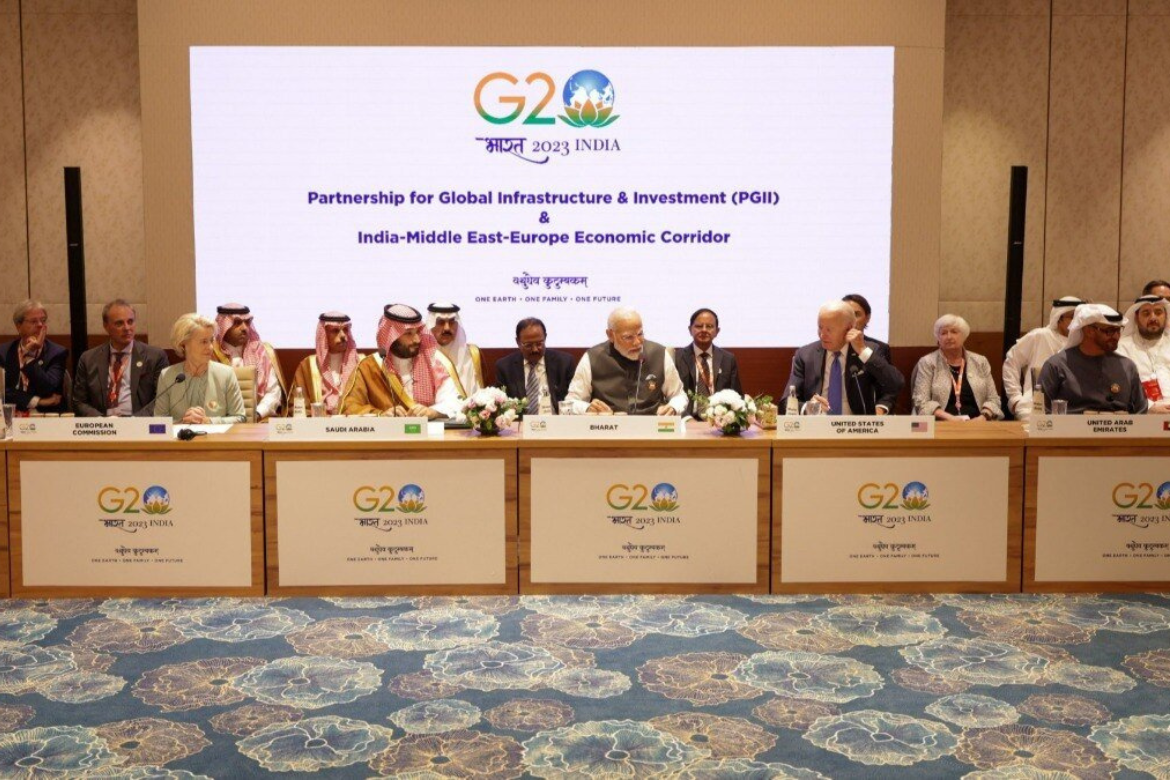Prime Minister Narendra Modi has announced the launch of a major economic corridor known as the India-Middle East-Europe corridor. This ambitious project involves a consortium of countries, including India, the United Arab Emirates (UAE), Saudi Arabia, the European Union (EU), France, Italy, Germany, and the United States. This initiative represents a significant milestone in international economic cooperation, with the potential to reshape trade, connectivity, and sustainable development across three continents.
PM Modi’s Vision
Prime Minister Modi highlighted the historic nature of this partnership, emphasizing its potential to foster economic integration among India, West Asia, and Europe. He expressed the belief that this corridor would chart a new course for connectivity and sustainable development on a global scale.
The project marks a turning point in international economic relations, with the potential to change the way countries approach economic cooperation and infrastructure development. President Joe Biden of the United States also lauded the initiative, describing it as a “big deal” that would likely become a more common term in the coming decade.
A Response to China’s Belt and Road Initiative
The India-Middle East-Europe economic corridor is part of the broader Partnership for Global Infrastructure Investment (PGII), which is a collaborative effort involving G7 nations to finance infrastructure projects in developing countries. PGII is widely regarded as a counter to China’s Belt and Road Initiative (BRI), a massive infrastructure program that seeks to connect the world to China’s economy.
This corridor aims to enhance trade among participating nations, including the exchange of energy products. It also represents one of the most ambitious responses to China’s infrastructure program, offering an alternative approach to global economic connectivity. The corridor will encompass various components, including a rail link, an electricity cable, a hydrogen pipeline, and a high-speed data cable, creating what European Commission President Ursula von der Leyen has described as “a green and digital bridge across continents and civilizations.”
The Rationale Behind the Corridor
Several key factors underpin the development of this economic corridor. Firstly, it is expected to boost prosperity among participating countries by facilitating the flow of energy and digital communications. Secondly, it addresses the infrastructure deficit in many lower- and middle-income nations, providing essential support for their economic growth. Lastly, it seeks to reduce regional instability and insecurity, contributing to peace and stability in the Middle East and beyond.
Jon Finer, President Biden’s principal deputy national security adviser, elaborated on these reasons, emphasizing the potential appeal of the corridor to participating countries. He underscored its transparency, high standards, and non-coercive nature, positioning it as a compelling alternative to other infrastructure initiatives.
Furthermore, this initiative can be seen as President Biden’s effort to strengthen the G20 group as a counterbalance to the influence of leaders like China’s Xi Jinping and Russia’s Vladimir Putin. The corridor aligns with the principles of economic openness, transparency, and cooperation, positioning it as a key driver of global economic development.
In conclusion, the India-Middle East-Europe economic corridor represents a bold step toward reshaping international economic cooperation and connectivity. By linking three continents through various infrastructure projects, it has the potential to drive economic growth, enhance prosperity, and promote stability in participating nations. As it unfolds, this corridor will likely remain in the spotlight as a symbol of a new era of international economic relations.



